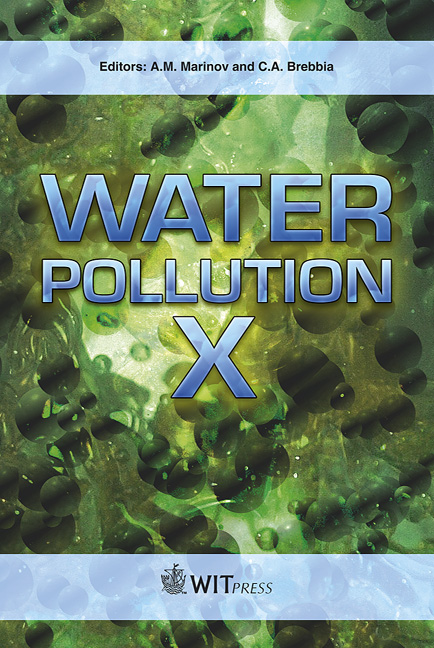Removal Of Lead From Aqueous Solutions Using Saudi Activated Bentonite
Price
Free (open access)
Transaction
Volume
135
Pages
12
Page Range
277 - 288
Published
2010
Size
369 kb
Paper DOI
10.2495/WP100241
Copyright
WIT Press
Author(s)
S. Al-Shahrani
Abstract
Raw Saudi bentonite which was obtained from the Khulays bentonite deposit, 95 km north of Jeddah, was ground to -325 mesh (44 m). Samples of ground bentonite were activated using sulfuric acid in order to increase its adsorptive capacity. The removal characteristics of lead ions from aqueous solution using Saudi activated bentonite were investigated under various operating variables such as shaking time, solution pH and initial metal concentration. The results showed that the sorption of lead ions on Saudi activated clay was very fast and the equilibrium was reached after only 10 min. They also showed that increasing the initial lead concentration decreased lead removal percentage due to the saturation of clay with lead ions. Furthermore, the adsorption of lead increases from 20 to 100% with an increase in solution pH from 1 to 5.0 and then 100% lead was removed when solution pH was from 5 to 11. The adsorption isotherm data were well fitted well with Langmuir better than Freundlich models. Lead adsorption onto Saudi activated bentonite was well represented by the pseudosecond- order kinetic model. Keywords: lead removal, Saudi activated bentonite, Langmuir isotherm, Freundlich isotherm, Adsorption kinetics. 1 Introduction Metal industries such as electroplating, metal finishing, metallurgical, tannery, chemical manufacturing, mining and battery manufacturing use large quantities of water in their processes. Wastewater streams from these processes contain toxic substances, heavy metal, acids, alkalis, and other substances. Removal of
Keywords
lead removal, Saudi activated bentonite, Langmuir isotherm, Freundlich isotherm, Adsorption kinetics





